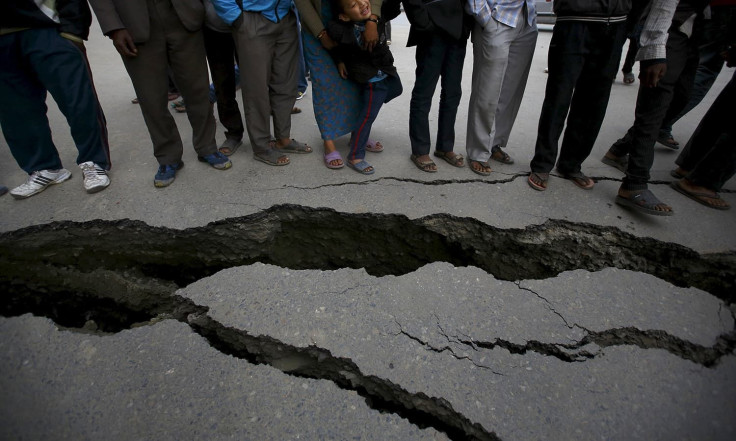Nepal Earthquake Could Cost Half Of The Country's Annual Economic Output; Damage To Hydroelectric Projects Still Being Assessed

Even before Saturday’s massive earthquake in Nepal, the Himalayan country wedged between India and China was faltering. Faced with crippling poverty, inadequate infrastructure and a 40 percent unemployment rate, the country has been operating without a constitution since 2012 amid street protests and strikes from minority party leaders.
Now, as more than 4,000 bodies have been dug out of the rubble in and around the capital, Kathmandu -- amid a flurry of quake aftershocks -- Nepal can add the economic toll of Saturday’s magnitude-7.8 earthquake to its list of problems.
“The Kathmandu valley contributes 30 percent of the national economy with its banking, business and education industries. It all got hit pretty badly,” said Alok Bohara, a professor of economics at the University of New Mexico and founding director of the Nepal Study Center. “And we don’t know the extent of the damage to the country’s hydro-tunneling projects.”
While it’s too early to quantify specifically how much the natural disaster will cost, the U.S. Geological Survey put early estimates at between $1 billion and $10 billion, or roughly half the country’s gross domestic product (GDP), the latest data from the World Bank show.
Rajiv Biswas, Asia-Pacific economist for IHS, a research consultancy, estimates the minimum cost at $5 billion. "Massive international disaster relief and rescue efforts will be needed urgently, as well as large-scale international financial and technical assistance for long-term reconstruction of the economy," Biswas wrote in a research note.
If the economic cost of the worst quake to hit Nepal since 1934 touches $10 billion, it would be higher than the December 2004 earthquake and tsunami that ravaged coastal Sumatra, Indonesia, killing 230,000 people, and the January 2010 temblor that shook Haiti, inflicting $8 billion in damage, data compiled by the Wall Street Journal suggest.
Nepal will feel the most immediate economic toll in what has been its most vital and fastest-growing economic sector: tourism. Lured by the country’s scenic Himalayan mountain landscape and its rich cultural history seeped in Hindu and Buddhist traditions, nearly 800,000 travelers visit Nepal every year, directly or indirectly supporting more than 1 million jobs in a country of nearly 27 million people, the World Travel and Tourism Council says.
Tourism as a share of the country’s economic activity more than doubled last year, to about $677 million, rapidly approaching 10 percent of the country’s GDP. Most of Nepal’s tourists come from China and India, who flock to the country’s religious temples. Mount Everest and the many rivers that flow out of the Himalayas have been major draws for the world’s outdoor adventurers. Since 2009, Nepal’s tourism industry has seen growth every year except 2013, and visitors had been spending more every year.
Now that growth will surely be checked.
“Short term, there will undoubtedly be some kind of decline,” Henry Harteveldt, co-founder of tourism research and advisory firm Atmosphere Research, told USA Today.
Bohara said it would be interesting to see how the $3 billion that Nepal's estimated three million workers abroad send back in remittances every year contributes to the country’s post-quake reconstruction. The country is heavily reliant on remittances from expatriates in Afghanistan, Saudi Arabia, Israel, the United States and elsewhere.
As for the ongoing political gridlock over forming a new constitution: “Maybe the earthquake will bring opposing parties together now that they realize they have a bigger concern,” he said. “That would be one bright side.”
© Copyright IBTimes 2024. All rights reserved.




















